
The Essential Guide to Locking a Folder on Your PC
In today's digital landscape, knowing how to secure your sensitive information is a critical skill. Whether you share a computer with family members or simply want to protect confidential data, encrypting a folder is a powerful way to prevent unauthorized access. This guide, brought to you by Newsoftwares.net, will walk you through the most effective methods for locking folders on your PC, ensuring your data remains private and secure.
Why You Need to Lock Your Folder
Securing a folder with a password is your first line of defense against data breaches and prying eyes. In a world where personal and professional information is increasingly vulnerable, this action provides a vital layer of protection. Locking folders is essential for:
- Personal Privacy: Protecting private photos, personal documents, and financial information from family members or roommates who may use your computer.
- Business Confidentiality: Safeguarding sensitive documents like client data, business plans, or proprietary research from unauthorized access.
- Security for Shared Devices: Ensuring your confidential files are inaccessible, even if someone else is logged into your PC.
- Protecting Against Theft: Making your data unreadable and useless to anyone who might steal your computer.
Built-in vs. Third-Party Folder Lock Methods
When it comes to securing a folder on your PC, you have two primary options: using the built-in features of your operating system or employing a dedicated, third-party software application.Built-in OS Features
Both Windows and macOS offer some form of built-in file and folder encryption.- The Upside: These methods are convenient since they are already part of your operating system, so there's no need to download additional software.
- The Downside: The security offered is often limited. For example, Windows’s Encrypting File System (EFS) ties encryption to your user account. This means the folder is unlocked and accessible as long as you are logged in, offering no protection if a user gains access to your account.
Dedicated Third-Party Software
Applications like Folder Lock are installed directly on your computer and provide a more robust and reliable alternative.- The Upside: These tools use military-grade, AES 256-bit encryption, a global standard for securing sensitive data. Your files are encrypted locally and never uploaded to a third-party server, ensuring maximum privacy. They provide true password protection, requiring a password every time you want to access the folder.
- The Downside: These applications require a one-time download and installation, and some advanced versions may have a cost. However, the enhanced security and peace of mind they provide are a worthwhile investment.
The Folder Lock Method: Simple and Secure Folder Encryption
The most effective and reliable way to lock a folder on your PC is by using a specialized security tool like Folder Lock. This method is intuitive, powerful, and relies on creating a secure, virtual container for your data.
Pre-Requisite:
You need to install Folder Lock application. However, If you have not installed it yet, You can read How to Download, Install, and Get Started with Folder Lock.
Method 1: Quick Drag-and-Drop Protection
This method is the fastest way to get a folder into a secure, encrypted container.Step 1: Open Folder Lock and Your Locker
- Launch the Folder Lock application and enter your master password.
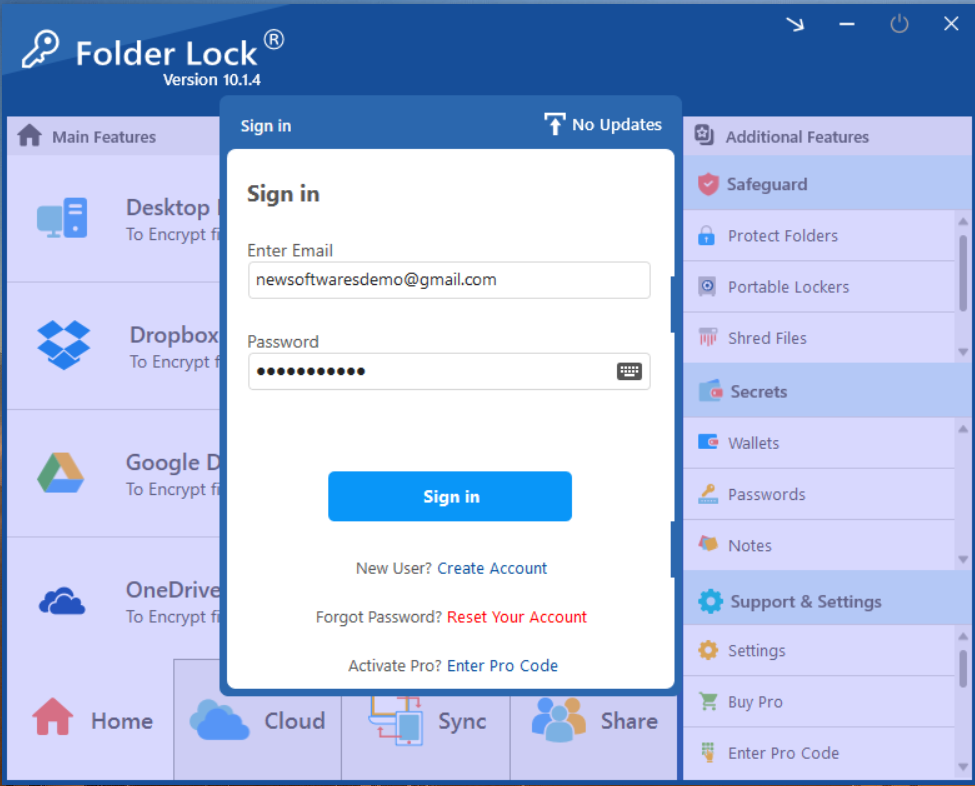
- On the main screen, find the "Desktop Locker" section. If your locker isn't open, click the "Open" button next to it. Your Desktop Locker will open in a new window.
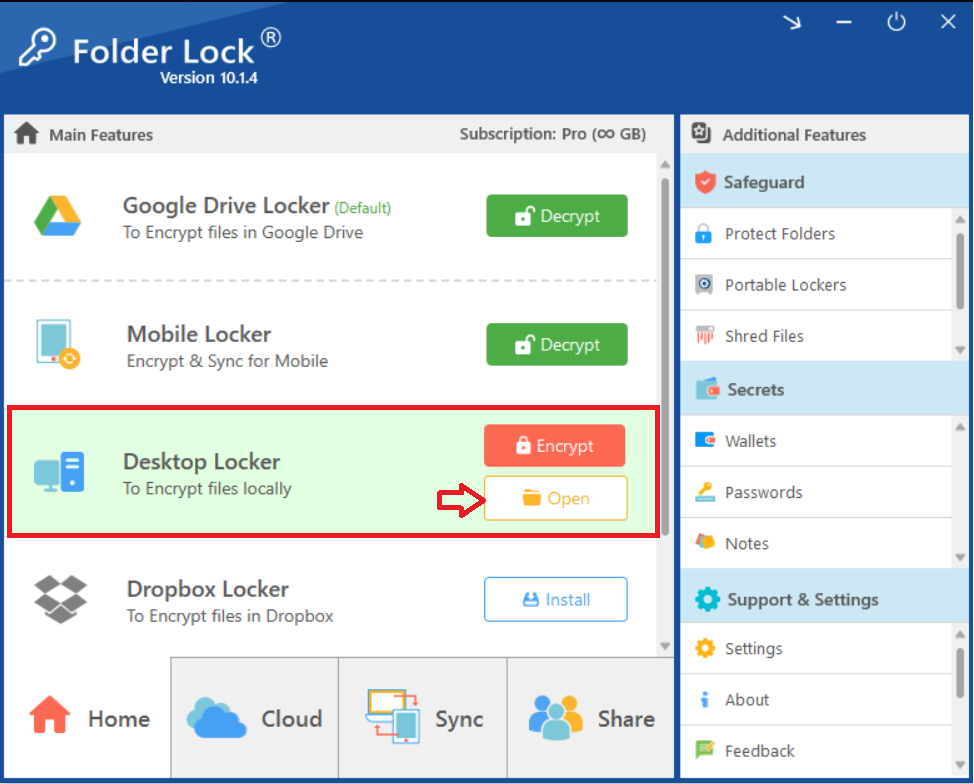
- Clicking on Open will open your Desktop Locker in Windows File explorer as shown in below screenshot.
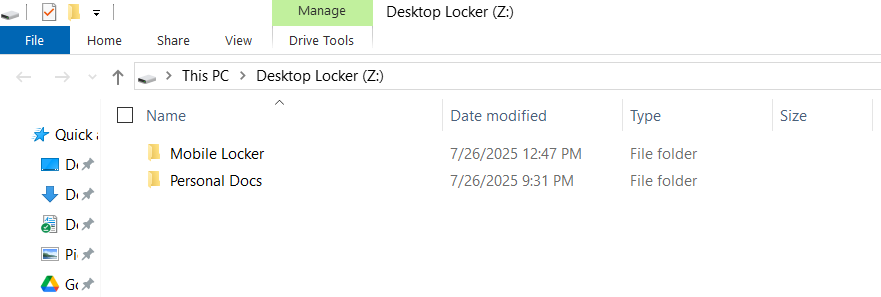
Step 2: Move Your Folder into the Locker
- Find the Folder on your computer that you want to protect. Drag the folder and drop it directly into the opened Desktop Locker window.

Step 3: Encrypt Your Locker
Once you have moved your Folder inside, return to the main Folder Lock application window. Click the "Encrypt" button next to the Desktop Locker. This action will hide the locker and secure all files inside, including your Folder.

Alternate Method: Protecting via the Safeguard Tab
Step 1: Open Folder Lock
- Launch the Folder Lock application on your computer and log in with your email and password.
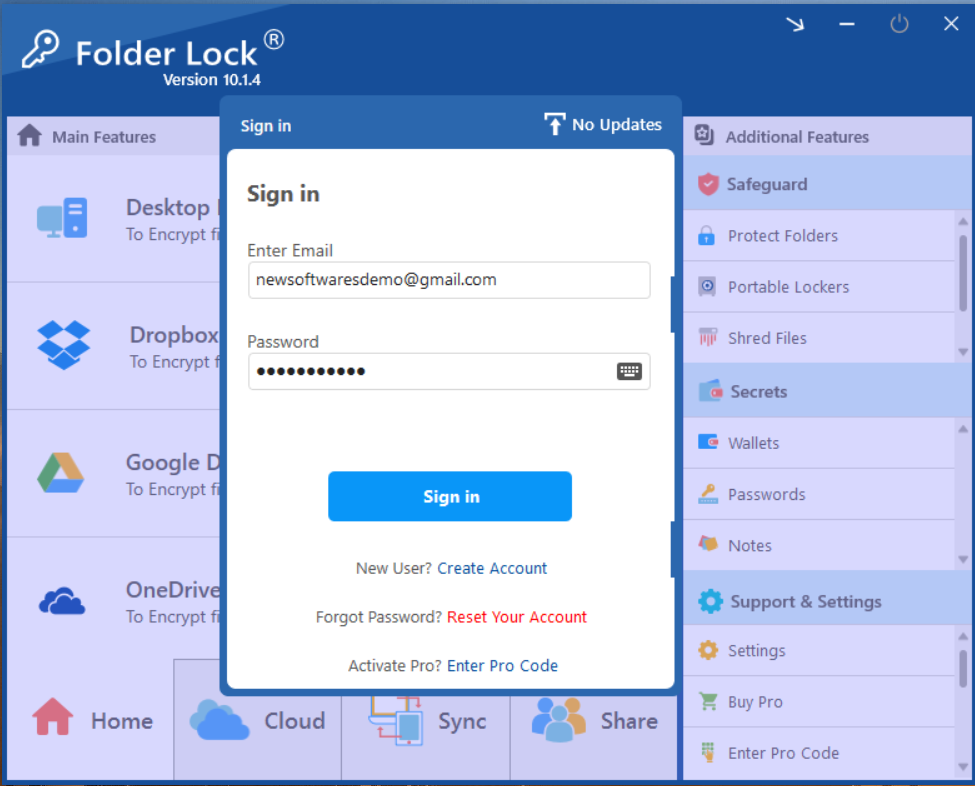
Step 2: Select "Protect Folders Under Safeguard Tab"
- Within the Safeguard section, click on the "Protect Folders" tab. This will open the interface for hiding your items.
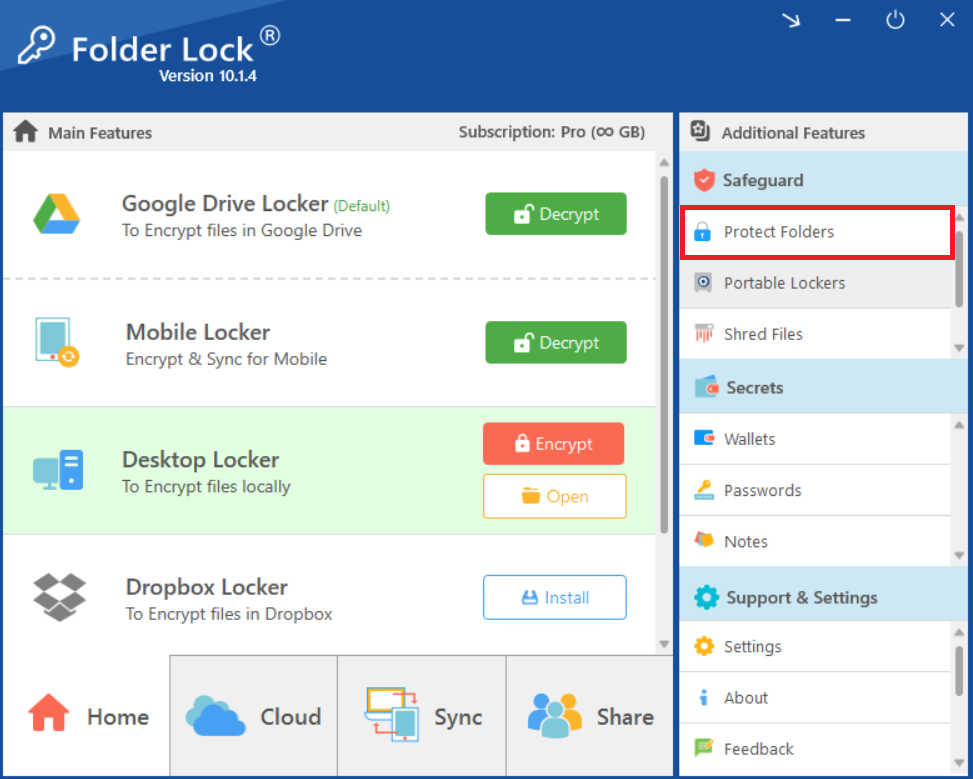
Step 3: Add Items to Lock
- In the "Protect Folders" view, click on the "Add Items to Lock" button at the top of the screen.

- A dropdown menu will appear. You can choose to add individual "File(s)","Folder(s)," or entire "Drive(s)" for protection. For locking your folder, we will be selecting "Add Folder(s)".

- Click on "Add Folder(s)" to browse and select your Folder.
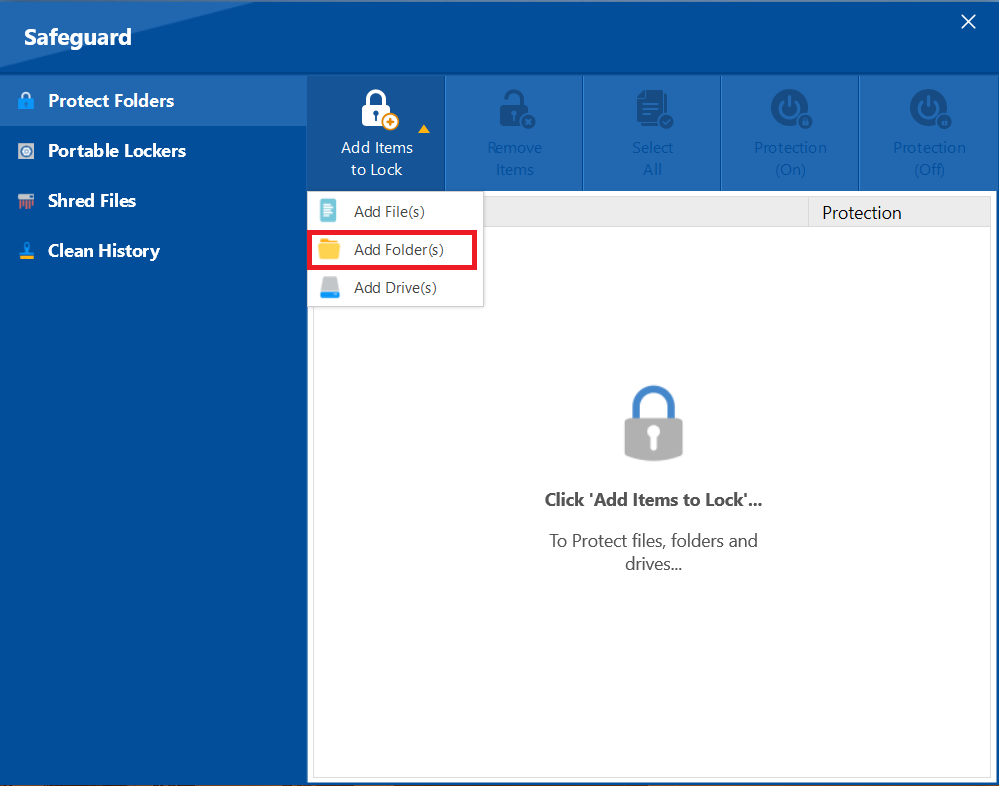
- From the browse menu select your desired file from its location. After successfull addition of your selected Folder, your selected ones will appear as shown in below screenshot.
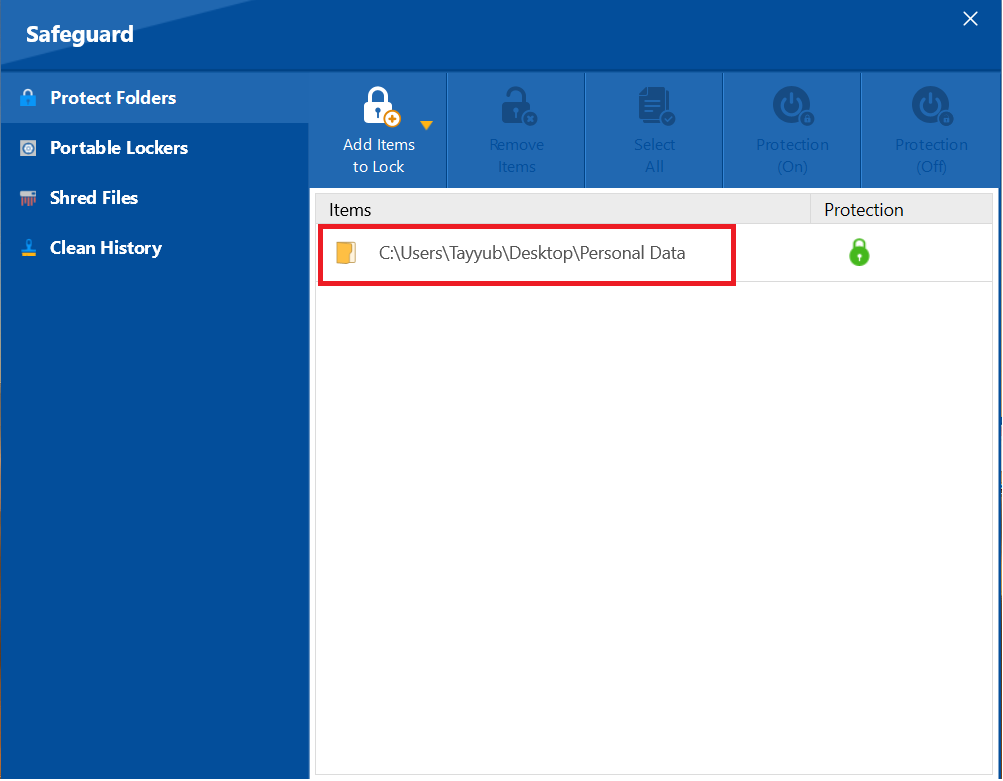
Step 4: Confirm Protection Status
- A green lock icon under the "Protection" column indicates that the Folder has been successfully protected and is now hidden.
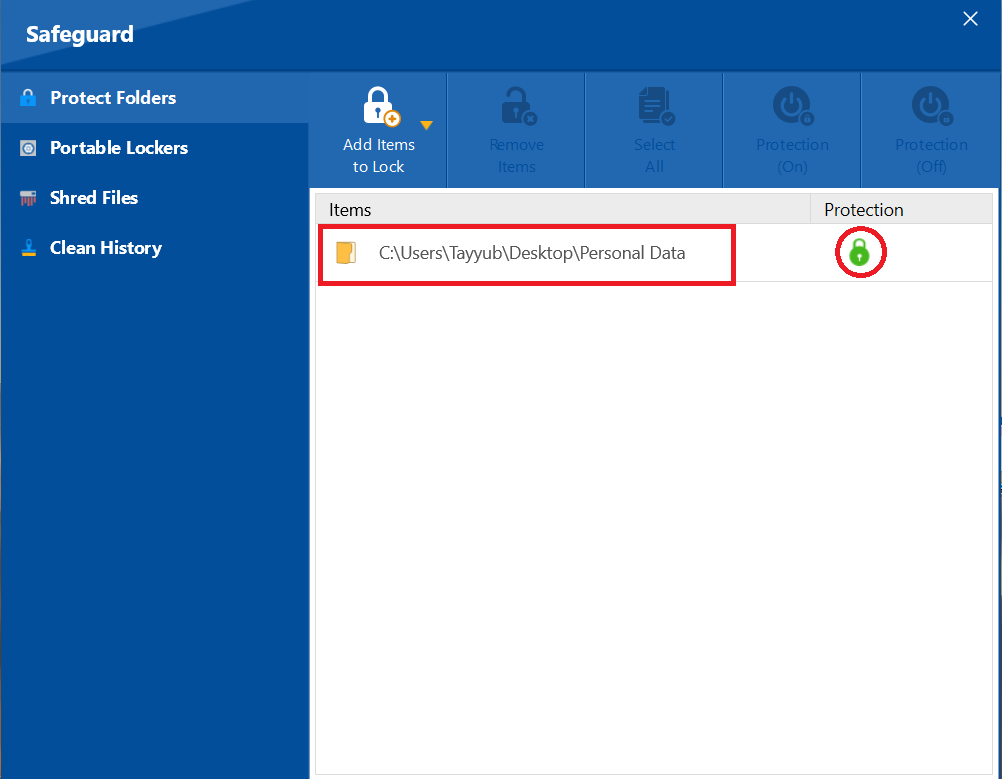
Frequently Asked Questions
Q: Can anyone access my locked folder?
A: No. The folder is completely hidden and requires the Folder Lock application and your master password to be accessed.Q: Does it affect my PC's performance?
A: No, the encryption process is quick and efficient. Folder Lock does not slow down your PC's performance.Q: What happens if I forget my master password?
A: Folder Lock has a password recovery option to help you regain access, but it is crucial to choose a strong, memorable password and store it securely.
This guide, powered by the expertise of Newsoftwares.net, has equipped you with the knowledge to effectively secure your digital assets. By adopting the professional-grade protection of the Folder Lock application, you are not just securing files—you are investing in your privacy and peace of mind. Taking this simple yet decisive action ensures that your most sensitive folders on your PC are shielded from unauthorized access, giving you complete control over your digital footprint.
